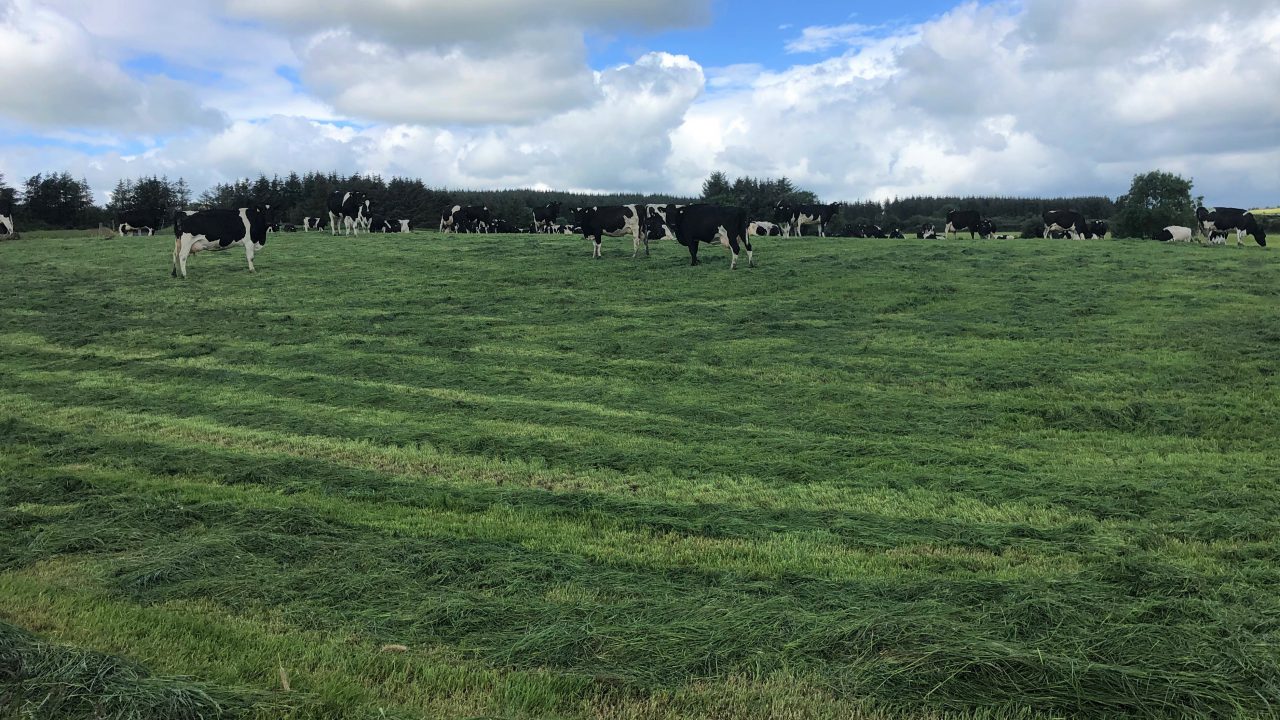As grass growth has taken off over the bank holiday weekend, a lot of farmers may be concerned about correcting grass quality in front of their cows.
Many farmers may find that their paddocks have a lot of stemmy grass and are wondering how to resolve this issue.
The important thing at this time of the year, is to maintain pre-grazing yields of 1,400kg DM/ha, however, this is not always possible.
The best practice when you begin to have too much grass ahead of the cows, is to take paddocks out of the rotation and cut them for baled silage, however, again, this is also not always possible.
If this is the case, you may need the contractor to come straight away in order to get the paddock into the next rotation, and during this time of year, contractors are not so readily available.
Pre-mowing is an option for the moment, as not every paddock can be mowed and baled.
Correcting grass quality – pre-mowing
Pre-mowing is where the grass in the paddock is mowed and then cows are allowed in to graze the mowed grass. This method is common practice in New Zealand.
This technique can be used on paddocks that have gone too strong or that have a large amount of stem present.
Pre-mowing is not all good, as it does have a number of drawbacks, including being an expensive method of managing grass and it also takes away the cows’ choice of what grass they eat.
Cows are selective grazers, meaning they will choose to eat the lush, high quality grass over the stemmy, low quality grass.
Taking away a cow’s freedom of choice, will more than likely hinder their milk production.
However, pre-mowing can also increase production, providing there is not an overload of stem in the paddock, as it will increase intakes as the grass is readily available to the cow.
This method works well if paddocks have gone too strong and you are looking to ensure that grass doesn’t run out.
However, if grass is plentiful on the farm and there is no fear of running out, mowing and baling the paddock is the ideal option.
Topping
Topping on the other hand, is where the paddock is cut down to 4cm, post-grazing, and will eliminate the amount of stem in the sward and ensure good quality grass for the next rotation.
It is a quick and effective way of correcting the grass quality, but, again, it is quite labour intensive and may have to be carried out more than once.
The fear is that it will affect the regrowth rate of the sward as if paddocks are not topped immediately after grazing, the pre-grazing cover of the next rotation may be affected.
Both options certainly result in improved grass quality for the next rotation, but both are associated with poor grass utilisation as grass is wasted in both cases.
It is no secret that the best way to correct grass quality on your farm is through mowing and baling strong paddocks, but unfortunately, this is not always an option and is dependent on the farm situation, so other options must be explored.
With this being said, good grassland management has to remain the focus, as achieving target residuals through grazing will save a lot of money and labour on your farm.
